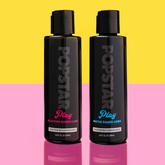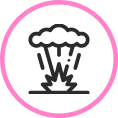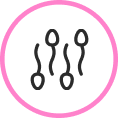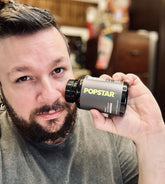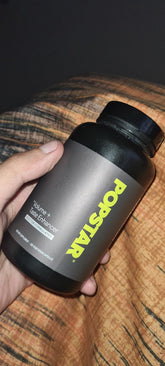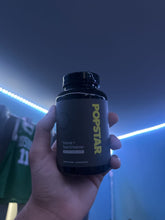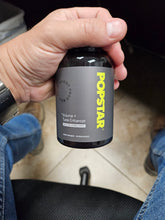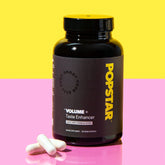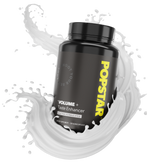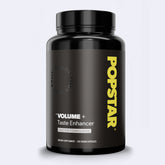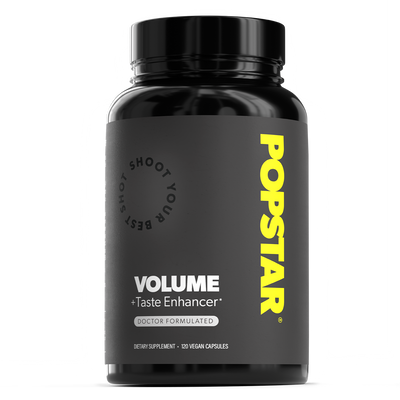The term “Male Gooch” is a colloquial way of referring to an area of the male body technically known as the perineum, or specifically the region between the scrotum and the anus. While it is sometimes overlooked in general health discussions, this sensitive area plays a significant role in men’s health—including urological, sexual, and hygienic considerations. In this comprehensive article, we’ll explore what the Male Gooch is, why it matters, and how to properly care for it. We’ll also answer frequently asked questions to help address common concerns.
Table of Contents
- Definition of the Male Gooch
- Anatomical Location
- Function and Importance
- Common Concerns
- Tips for Care and Hygiene
- Frequently Asked Questions (FAQs)
- References
Definition of the Male Gooch
The phrase “Male Gooch” refers to the stretch of skin between the scrotum and the anus. In medical terminology, this area is called the perineum. Though “gooch” and “taint” are informal terms, the perineum serves important functions for men’s health and well-being. Additionally, it houses critical nerves, blood vessels, and muscle attachments that support the urinary and reproductive systems.
Historically, referencing the perineum has not been as common in everyday conversation because it may be regarded as a private or sensitive topic. However, understanding the anatomy and significance of this area is crucial for protecting male sexual health, urinary function, and overall bodily comfort.
Unlike other well-known parts of male anatomy, the perineum is often overshadowed in health guides and men’s wellness discussions. Yet, it is a fascinating intersection of urological, sexual, and gastrointestinal function. Whether called the “Male Gooch” or just the perineum, taking steps to learn about it is vital to maintaining good health.
Anatomical Location
The male perineum (gooch) is situated in the lower pelvic region. Specifically, it stretches from the base of the scrotum to the anus. In some anatomical references, you will see this area segmented into the urogenital triangle (the area closer to the genitals) and the anal triangle (the area housing the anus). The division is more commonly used in detailed anatomical studies.
Here are a few points to highlight the location’s significance:
- Proximity to the Genitals: The perineum is situated just behind the scrotal sac, making it a supportive structure for reproductive organs.
- Relation to the Anus: The perineum extends to the anal opening, meaning it also influences bowel function and comfort.
- Muscular Support: Several pelvic floor muscles fan out beneath the skin in this region, contributing to both urinary and bowel control.
This anatomical position makes the perineum essential for a variety of functions, from sexual pleasure to physiological processes like defecation and urination.
Function and Importance
While the term “Male Gooch” might sound informal, the perineum serves numerous critical roles in the male body. Beyond simply being a bridge between the genitals and the anus, it is a key contributor to overall wellness and comfort. Here’s why it matters:
- Pelvic Floor Support: The perineum is closely linked to the pelvic floor muscles. These muscles help control the bladder and bowel, ensuring that urinary and fecal continence are maintained.
- Sexual Function: Nerves located in the perineum contribute significantly to sexual arousal and pleasure. Gentle stimulation can be pleasurable, and some nerves may play a role in orgasmic function.
- Reproductive Health: The blood vessels beneath this region aid in circulation for healthy sexual organs. Proper blood flow is crucial for erection quality and overall genital health.
- Posture and Comfort: Healthy musculature in the perineum supports the pelvis, which influences posture. Discomfort in this region can lead to broader issues such as chronic pelvic pain and difficulty sitting.
All these aspects combine to underscore why paying attention to perineal health can have a ripple effect on multiple facets of masculine well-being.
Common Concerns
Many men experience discomfort or issues related to the perineum (gooch) at various stages of life. Understanding the common concerns can help reduce anxieties and guide when to seek professional care. Below are typical problems men may face in this region:
The “Gooch” or Perineal Pain
Perineal pain can range from mild aches to sharp, chronic discomfort. Often, this pain can be caused by:
- Prostatitis: Inflammation of the prostate gland can cause radiating pain throughout the pelvic and perineal area.
- Pelvic Floor Dysfunction: Tight or strained muscles in the pelvic floor sometimes manifest as perineal pain.
- Infections: Yeast or bacterial infections can lead to skin irritation and soreness.
- Trauma: Injuries from sports, cycling, or other high-impact activities can also affect this sensitive region.
If you experience prolonged or severe perineal pain, a consultation with a healthcare provider is recommended.
Irritation and Chafing
The perineum can be prone to chafing, especially for men who exercise frequently, wear tight clothing, or work in hot environments. Friction, combined with sweat and sometimes inadequate ventilation, can lead to skin irritation and even rashes.
To reduce these issues, choosing supportive yet breathable underwear and using moisture-wicking powders or lotions can be beneficial. Maintaining general hygiene (showering after sweating, keeping the area clean and dry) goes a long way in preventing chafing-related problems.
Rashes, Redness, and Fungal Infections
Excess moisture and poor ventilation can lead to bacterial or fungal overgrowth. Common culprits for persistent rashes or bumps include:
- Jock Itch: A fungal infection that thrives in warm, moist areas of the body.
- Contact Dermatitis: Skin irritation caused by allergies to soaps, detergents, or fabrics.
- Heat Rash: Blocked sweat glands that result in rashes and itchiness.
Most rashes can be addressed with over-the-counter antifungal or antibacterial creams when caught early. However, chronic or recurring rashes may require medical attention.
Lumps or Bumps
Finding lumps or bumps in the male gooch area can be alarming. These may be:
- Cysts: Sebaceous cysts can develop beneath the skin, often harmless but sometimes causing discomfort.
- Ingrown Hairs: Hair follicles can become trapped under the skin, leading to painful bumps or pustules.
- Swollen Glands or Abscesses: Infection can cause glands to swell or fill with pus, a situation that may need medical evaluation.
Persistent lumps, or those accompanied by pain, redness, or discharge, should be inspected by a healthcare professional to rule out more serious conditions.
Odor and Hygiene Issues
Odors can arise from bacterial activity on sweat and dead skin cells, often exacerbated by tight clothing or infrequent washing. Daily washing with a mild, non-irritating cleanser and proper drying afterward can help prevent odors. If the odor persists or is particularly strong, it could be signifying infections or other medical issues that warrant further evaluation.
Skin Discoloration
The skin in the perineal area can sometimes appear darker or lighter than surrounding skin. While slight variations in pigmentation can be normal, sudden discoloration or patches of pigmentation may signal inflammation, infection, or other dermatological conditions. Monitoring changes and consulting a medical professional if suspicious changes occur is crucial.
Recognizing and addressing these common concerns early is key to maintaining a healthy Male Gooch. If a problem becomes persistent or worrisome, seeking professional medical advice is recommended.
Tips for Care and Hygiene
Taking proper care of the Male Gooch can significantly reduce discomfort, odor, and the risk of infection. Because the perineum can be susceptible to moisture, friction, and bacterial growth, a few simple changes in daily routines can make a world of difference.
1. Daily Cleansing
Gently washing the perineum (including the folds and creases) every day is vital. Use a mild soap or cleanser to remove sweat, bacteria, and other debris. Avoid harsh scrubbing, which can aggravate the skin. After cleansing, thoroughly pat the area dry. Retaining moisture in this region can lead to rashes or fungal overgrowth.
2. Proper Grooming
Some men prefer trimming or shaving the hair in this area. If you choose to groom your perineum, opt for techniques that minimize skin irritation. Using a clean, sharp razor or electric trimmer can reduce the risk of cuts and ingrown hairs. Additionally, consider applying aloe vera gel or gentle post-shave lotions to soothe the skin.
3. Wear Breathable Fabrics
Opt for underwear made from cotton or other moisture-wicking materials. Tight-fitting, non-breathable fabrics can trap heat and moisture, prompting bacterial and fungal growth. By wearing breathable underwear, you allow air circulation, which helps keep the region dry and comfortable.
4. Avoid Excessive Moisture
Moisture is a key driver of irritation. After showers, workouts, or swimming, ensure you dry your gooch area before dressing. You can also consider specialized powders or anti-chafing creams formulated to wick away moisture. This is particularly beneficial for athletes or those who work in physically demanding jobs.
5. Use Gentle Products
Chemical-laden soaps, perfumed body washes, or deodorants can irritate sensitive perineal skin. Switching to fragrance-free or hypoallergenic products can help maintain balance in this delicate area. If you notice persistent irritation or itching, evaluate the products you use for potential irritants.
6. Maintain a Healthy Diet
A balanced diet with adequate hydration influences skin health and bodily secretions. Drinking enough water supports healthy sweating and reduces the likelihood of strong odors or dehydration. Additionally, vitamins and nutrients play a role in skin healing and resilience.
7. Moderate Exercise and Pelvic Floor Exercises
Regular exercise enhances blood flow and general fitness, which indirectly benefits perineal health. Pelvic floor exercises (sometimes called “Kegels for men”) can improve muscle tone and help prevent issues like urinary incontinence and pelvic pain. Practicing these exercises in tandem with a balanced fitness routine supports overall pelvic health.
8. Listen to Your Body
Pain, itching, prolonged discomfort, and unusual discharge can indicate problems that need professional care. Early intervention prevents minor issues from blossoming into more complicated conditions. By paying close attention to the signals your perineum is sending, you can catch and treat conditions promptly.
Combining these measures can drastically improve perineal comfort and hygiene. A clean, well-maintained gooch not only feels better but also reduces the chances of infections, odors, and other health complications.
Frequently Asked Questions (FAQs)
1. What exactly is the “Male Gooch”?
The term “Male Gooch” is a popular name for the male perineum, which lies between the scrotum and anus. It includes complex nerve pathways, blood vessels, and connective tissues that support urinary, sexual, and bowel functions.
2. Why is perineal health important for men?
Perineal health is essential because it influences urinary control, sexual enjoyment, and general comfort. Maintaining good hygiene and paying attention to wellness in this area can reduce risks of common problems like infections, pain, or skin irritation.
3. How can I prevent odor in this area?
Odor typically occurs when bacteria break down sweat, dead skin, and bodily secretions. To prevent it, practice consistent hygiene, wear breathable underwear, and stay dry. Using mild cleansers and powders can help keep the region fresh.
4. Is it normal to have occasional itching?
Mild, short-term itching can occur from sweat, friction, or minor irritations. Typically, itching subsides once the cause is resolved—like changing clothes or showering. However, persistent or intense itching may indicate a fungal or bacterial infection, which calls for medical advice.
5. Can pelvic floor exercises help this region?
Yes. Pelvic floor exercises (Kegels) strengthen the muscles that support the bladder, bowel, and sexual function. By improving pelvic floor musculature, you may enhance erectile function and reduce discomfort in the perineal region.
6. What can cause chronic pain in the Male Gooch?
Common causes include prostatitis (inflammation of the prostate), pelvic floor dysfunction, nerve entrapment, infections, or injuries. Treatment options range from antibiotics to physical therapy or further medical intervention. A healthcare professional can provide a personalized diagnosis.
7. How do I know if a bump is serious?
Harmless cysts or ingrown hairs often look like small lumps that may cause slight discomfort. Warning signs of a more serious condition include persistent pain, redness, swelling, discharge, or lumps that significantly grow in size. Seek a medical evaluation if you experience any of these symptoms.
8. Can the Male Gooch be injured during sports or exercise?
High-impact exercises like cycling, horseback riding, or contact sports can stress this region. Protective gear, properly-fitted seats, and good posture reduce the risk of perineal injuries. If you experience pain or numbness while cycling or after exercise, adjustments to the seat or seeking professional advice may be warranted.
9. Should I shave or trim the hair in that area?
Grooming in the perineal region is a personal choice. Some men prefer trimming or shaving to enhance hygiene and comfort, especially if they sweat often. If you choose to remove hair, practice caution to avoid cuts, infections, or ingrown hairs. Using clean tools and quality shaving products is essential.
10. When should I consult a doctor?
Seek medical advice if you experience persistent pain, intense itching, unusual discharge, or lumps that don’t resolve quickly. Also, any major changes in skin coloration or an inability to control urination or bowel movements should be addressed by a healthcare professional.
References
- National Institutes of Health (NIH) – www.ncbi.nlm.nih.gov/pmc/
- Mayo Clinic – www.mayoclinic.org/
- Johns Hopkins Medicine – www.hopkinsmedicine.org/health/
- Cleveland Clinic – my.clevelandclinic.org/
Maintaining proper awareness, regular hygiene, and a proactive approach to potential conditions can make a vital difference in men’s perineal health. If you find new or worsening symptoms, it’s always best to consult a healthcare professional for tailored guidance. Your gooch may not get the same attention as other parts of your body, but it plays an undeniable role in men’s overall well-being.


